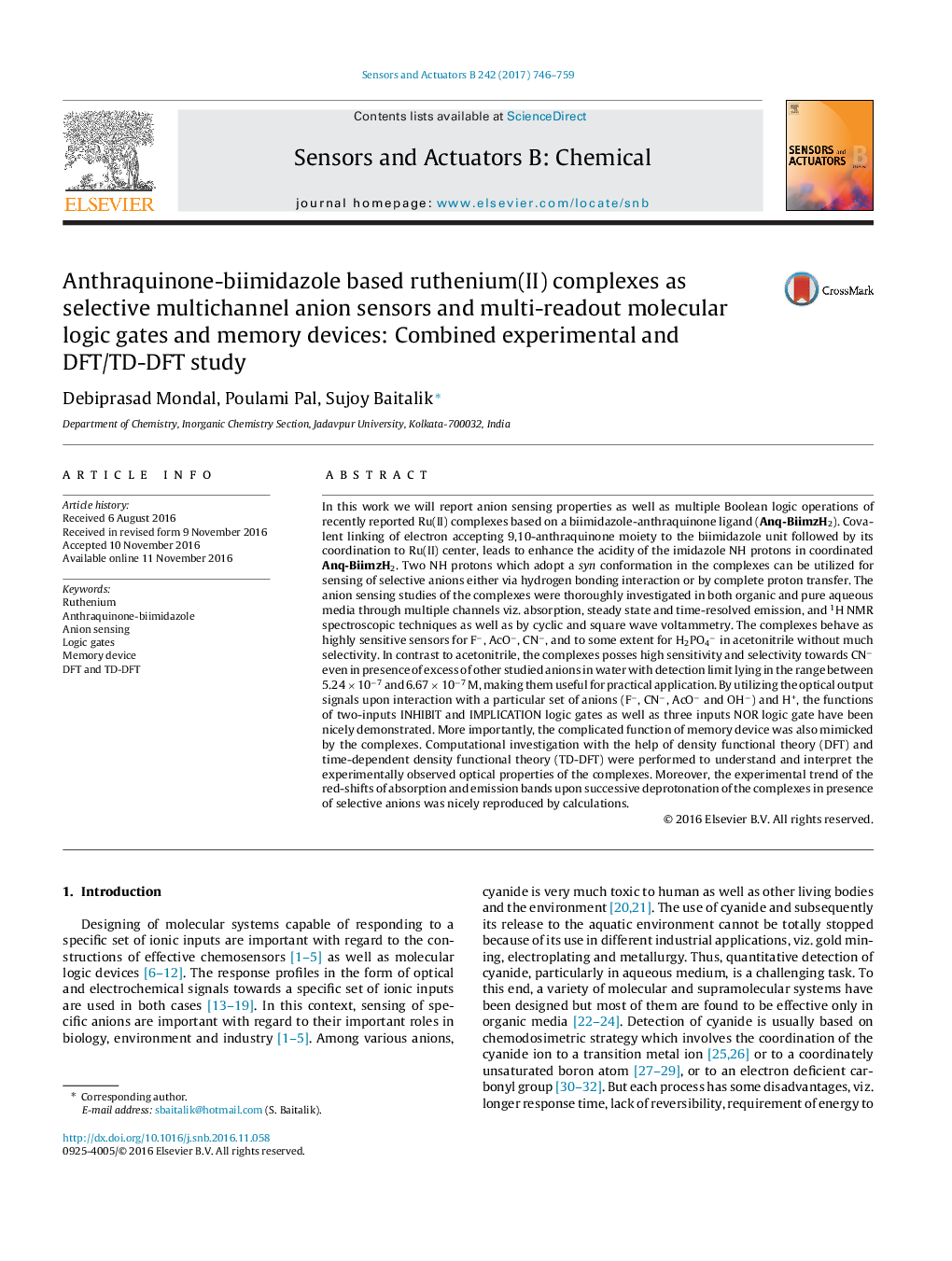| کد مقاله | کد نشریه | سال انتشار | مقاله انگلیسی | نسخه تمام متن |
|---|---|---|---|---|
| 5009739 | 1462049 | 2017 | 14 صفحه PDF | دانلود رایگان |

- Anthraquinone-biimidazole based Ru(II) complexes act as multi-channel sensors for selected anions.
- The complexes have the ability to mimic the functions of several molecular logic devices.
- Interactions with selected anions lead to significant modulation of the photo-redox properties of the complexes.
- DFT/TD-DFT calculations provide insight for assignment of experimental absorption and emission spectral bands.
In this work we will report anion sensing properties as well as multiple Boolean logic operations of recently reported Ru(II) complexes based on a biimidazole-anthraquinone ligand (Anq-BiimzH2). Covalent linking of electron accepting 9,10-anthraquinone moiety to the biimidazole unit followed by its coordination to Ru(II) center, leads to enhance the acidity of the imidazole NH protons in coordinated Anq-BiimzH2. Two NH protons which adopt a syn conformation in the complexes can be utilized for sensing of selective anions either via hydrogen bonding interaction or by complete proton transfer. The anion sensing studies of the complexes were thoroughly investigated in both organic and pure aqueous media through multiple channels viz. absorption, steady state and time-resolved emission, and 1H NMR spectroscopic techniques as well as by cyclic and square wave voltammetry. The complexes behave as highly sensitive sensors for Fâ, AcOâ, CNâ, and to some extent for H2PO4â in acetonitrile without much selectivity. In contrast to acetonitrile, the complexes posses high sensitivity and selectivity towards CNâ even in presence of excess of other studied anions in water with detection limit lying in the range between 5.24Â ÃÂ 10â7 and 6.67Â ÃÂ 10â7Â M, making them useful for practical application. By utilizing the optical output signals upon interaction with a particular set of anions (Fâ, CNâ, AcOâ and OHâ) and H+, the functions of two-inputs INHIBIT and IMPLICATION logic gates as well as three inputs NOR logic gate have been nicely demonstrated. More importantly, the complicated function of memory device was also mimicked by the complexes. Computational investigation with the help of density functional theory (DFT) and time-dependent density functional theory (TD-DFT) were performed to understand and interpret the experimentally observed optical properties of the complexes. Moreover, the experimental trend of the red-shifts of absorption and emission bands upon successive deprotonation of the complexes in presence of selective anions was nicely reproduced by calculations.
Ru(II) complexes based on a biimidazole-anthraquinone act as multichannel sensors for selected anions and mimic the functions of multiple logic gates and memory device.120
Journal: Sensors and Actuators B: Chemical - Volume 242, April 2017, Pages 746-759